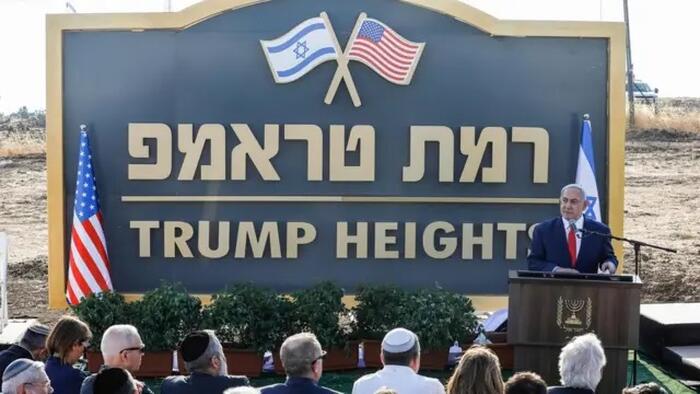This week witnessed a significant escalation in tensions between Hezbollah and Israel, specifically through an attack targeting Trump Heights, a settlement located in the Golan Heights, which Israel captured from Syria during the 1967 Six-Day War. The incident is notable in that it occurred shortly after Donald Trump emerged victorious in a recent election, which has incited discussions about the implications of his policies and the settlement itself. Reporting from Iranian state media and Al-Mayadeen indicated that Hezbollah’s strike coincided with the announcement of Trump’s election win, highlighting the political undertones of the attack. Alarm sirens were activated not only in Trump Heights but also throughout other regions in northern and central Israel, underscoring the broader security atmosphere in the area.
Trump Heights, officially named “Ramat Trump” in Hebrew, was established in 2019 as a direct acknowledgment of Trump’s support for Israel’s claim over the Golan Heights. His decision to recognize Israeli sovereignty over this territory was met with international criticism, as many nations still regard it as Syrian land. This move was seen as ultra-controversial, as it disregarded the long-standing view of Golan Heights as “Israeli-occupied territory.” Despite the settlement’s high-profile naming and potential for growth, the community has struggled with low population numbers and economic opportunities, resulting in a sense of isolation for its residents.
The settlement was intended to serve as a beacon of hope and a marketing strategy to draw new residents and investments, particularly in the context of heightened security fears stemming from Israel’s ongoing conflicts with Hezbollah in Lebanon. However, the anticipated influx of new residents has not materialized to the extent that proponents of the settlement had hoped for. At present, only a handful of families reside in Trump Heights, and community members have expressed a desire for more substantial development and funding for security measures. The connection to Trump could be seen as a double-edged sword that, while bringing attention to the area, also ties it unfavorably to the contentious Israeli-Palestinian dynamics.
Hezbollah’s attack on Trump Heights can also be interpreted as a reaction to perceived Israeli and U.S. policies that have heightened tensions in the region. Following Trump’s announcement of recognizing Israeli sovereignty over the Golan Heights, Hezbollah has been vocal about its discontent, likely prompting the group to strike in a show of resistance. The targeting of Trump Heights specifically illustrates Hezbollah’s strategy to make a statement in a politically charged atmosphere, especially during a time when Trump’s political fortunes have shifted following the election results. One resident shared that Trump’s electoral victory could elevate the settlement’s profile, even as they remain wary of the ongoing security threats.
The ceremony officiating the naming of Trump Heights had generated considerable media coverage, particularly when Israeli Prime Minister Benjamin Netanyahu attended the unveiling. The event was marked by the display of a sign bearing Trump’s name alongside U.S. and Israeli flags, yet it also drew criticism from those who perceived it as a mere publicity stunt without any substantial legal or developmental backing. Critics argued that while the gesture was grand, it lacked the practical steps necessary to ensure the settlement’s viability and sustainability.
In summary, the recent rocket attack by Hezbollah underscores the precarious nature of life in Trump Heights, a settlement that represents both a political statement and a symbolic hope for its residents. While the military and geopolitical implications of Hezbollah’s actions are significant, the socio-economic realities of Trump Heights reveal ongoing struggles faced by the community. Furthermore, as the U.S. political landscape shifts with Trump’s return, the intersection of international relations and local sentiments will likely continue to influence the dynamics in this disputed area. The residents’ hopes for growth and security resonate amid a backdrop of conflict, and the unfolding developments may either enhance or further complicate their aspirations in the months ahead.

